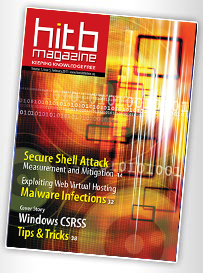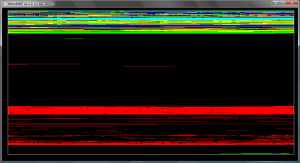(Collaborative post by Mateusz “j00ru” Jurczyk & Gynvael Coldwind)
Early Sunday morning discussion has resulted in j00ru coming up with an idea to mitigate some variants of kernel exploitation techniques by introducing a CPU feature that would disallow execution control transfers in kernel-mode to code residing in user memory area pages (e.g. addresses < 0x80000000 on a 32-bit Windows with default settings). The idea was that the system would mark every page as either being allowed to execute code in ring-0 or not. And hey, guess what… Intel has already proposed such a feature a month ago! Furthermore, it seems that this exact idea was already described in 2008 by Joanna Rutkowska, and two days ago she has published a follow up post on her blog.
The feature is called Supervisor Mode Execution Protection (SMEP for short) and it is documented in the newest release (May 2011) of the Intel manual 3A sections 2.5 (CR4.SMEP flag) and 4.6 (per memory page settings). For convenience reasons, we have quoted the related parts at the end of this post. Also, Dan Rosenberg has already (May 16, 2011) discussed, how this feature will interact with Linux and its specifics. To contribute to the discussion, we decided to do a similar write-up, and describe the implications of SMEP on Windows (and possible ways of bypassing it).
 Today, I would like to present the fifth issue of the well-known
Today, I would like to present the fifth issue of the well-known  Traditionally – during the annual, last
Traditionally – during the annual, last 